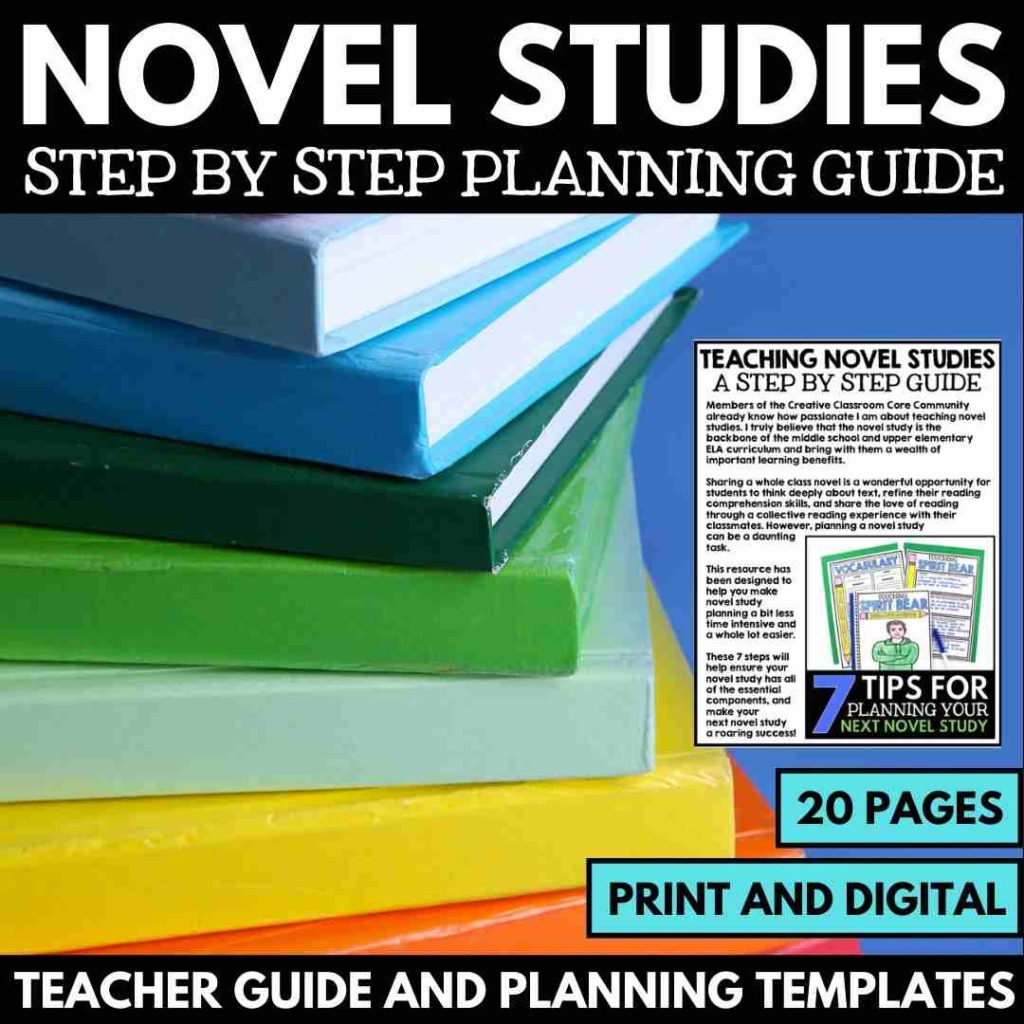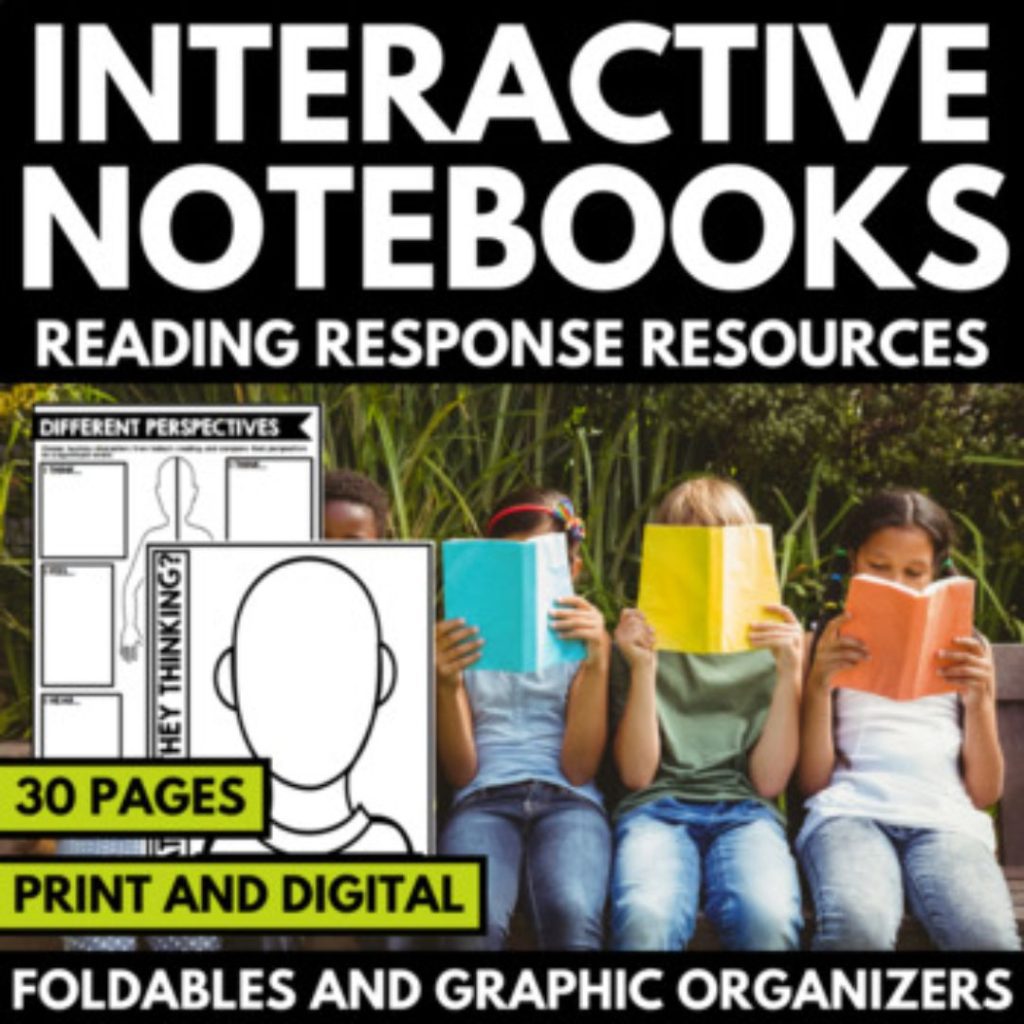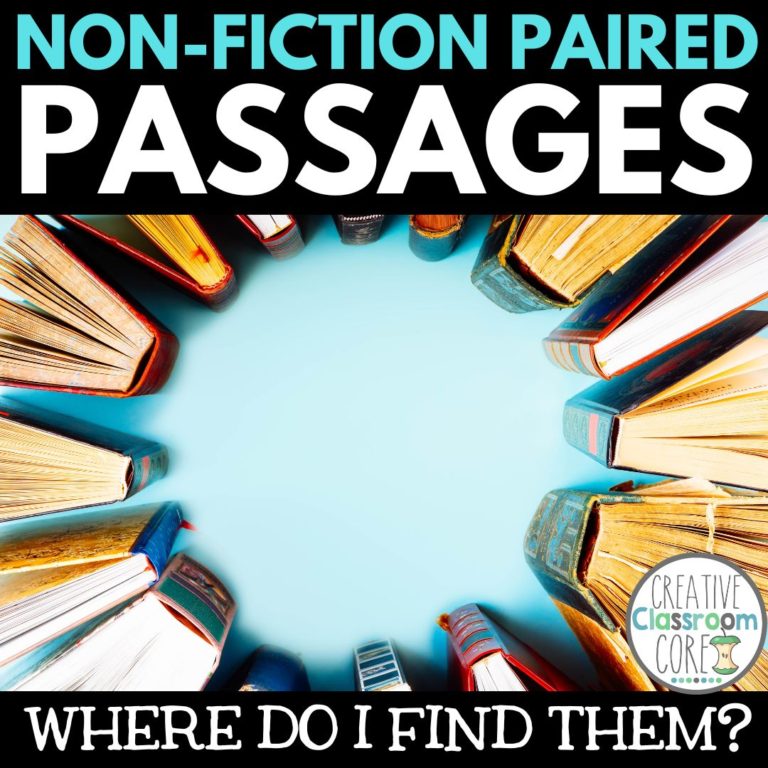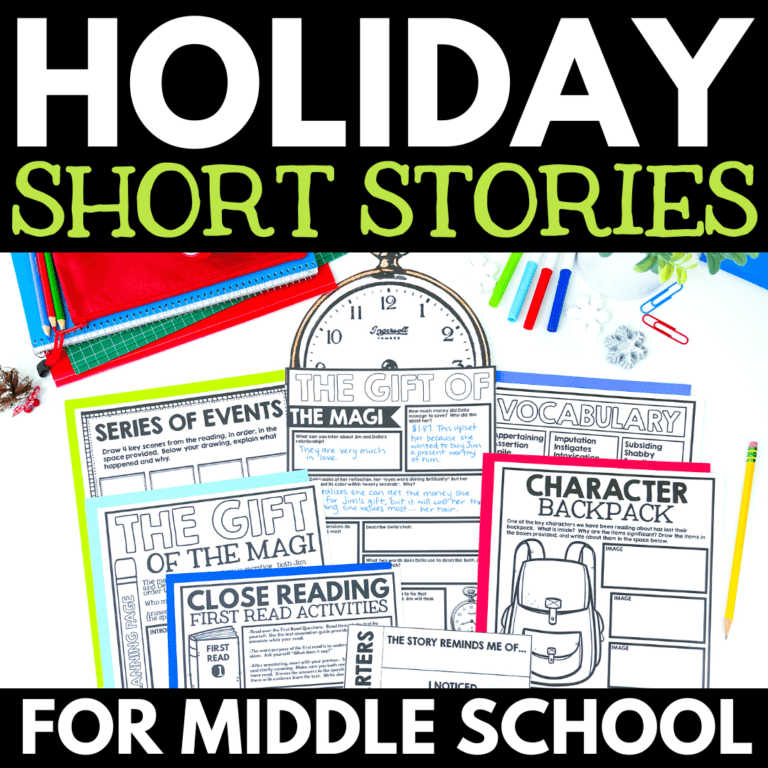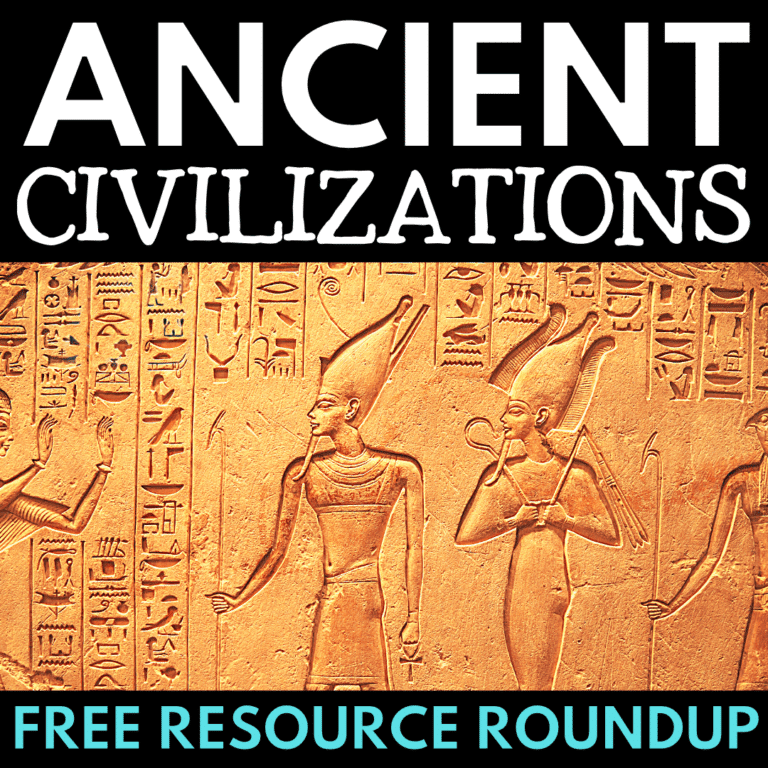How to Plan a novel study: Choosing the Activities
By MARISSA DESPINS Updated Sept 19, 2023
How to plan a novel study
Welcome back to the last post in my series on how to plan a novel study your learners will love. Past posts have discussed what novel studies are, determining your purpose, selecting your framework, planning your timeline, and choosing your final assessment. Today’s post focuses on my very favorite part of planning a novel study: choosing the activities.
Looking for a STEP BY STEP Novel Study Planning Guide? Click on the image below to download your FREE guide!
Once you have established the overall plan for your novel study, it’s time to flesh it out with various activities that will engage and challenge your students. This will involve a variety of tasks before, during, and after reading to ensure that they gain a thorough understanding of the text.

For more information on teaching specific novels, you won’t want to miss our posts on teaching Because of Winn Dixie, Wonder, The Hunger Games, Charlie and the Chocolate Factory, and The Outsiders!
How to plan a novel study: Introducing the novel
First, consider how you will introduce the novel to your students. Determine if any background information is necessary before they delve into the book, such as information about the author, setting, or historical context.
Pre-reading activities can also include analyzing the cover or discussing a relevant issue that appears in the book. If the novel contains illustrations, you may wish to hang copies of them around the room and have students go on a “picture walk”. This can be a great way to get students excited and curious about the story to come. Showing students a “book trailer” of the novel they are about to read is another great way to build anticipation. If you search “book trailer” followed by the name of your novel on YouTube, you will likely find several available to show your students. I strongly suggest you watch the trailer before showing it to your class, to avoid any issues with inappropriate content or spoilers.
If you are struggling with choosing the perfect book for your next novel study, you won’t want to miss our lists of favorite middle school and upper elementary novels!
How to plan a novel study: Reading comprehension Strategies
Reading comprehension is a crucial component of any novel study, so it is essential to incorporate lessons and activities that address various aspects of comprehension, such as identifying themes, examining character development and plot structure, summarizing, and making inferences and connections. These checks can be accomplished through group discussions, independent written responses, and group activities. Be sure to incorporate a variety of activities to cater to different learning styles. For more information on reading strategies, check out this blog post.
How to plan a novel study: MINI LESSONS
Leave room for any mini-lessons you plan to teach to aid student comprehension, such as reviewing plot elements, literary devices, or effective annotation techniques. Be sure to account for time in your plan for teaching these lessons and completing activities throughout the novel study. For detailed information on teaching student annotation strategies, check out this blog post.
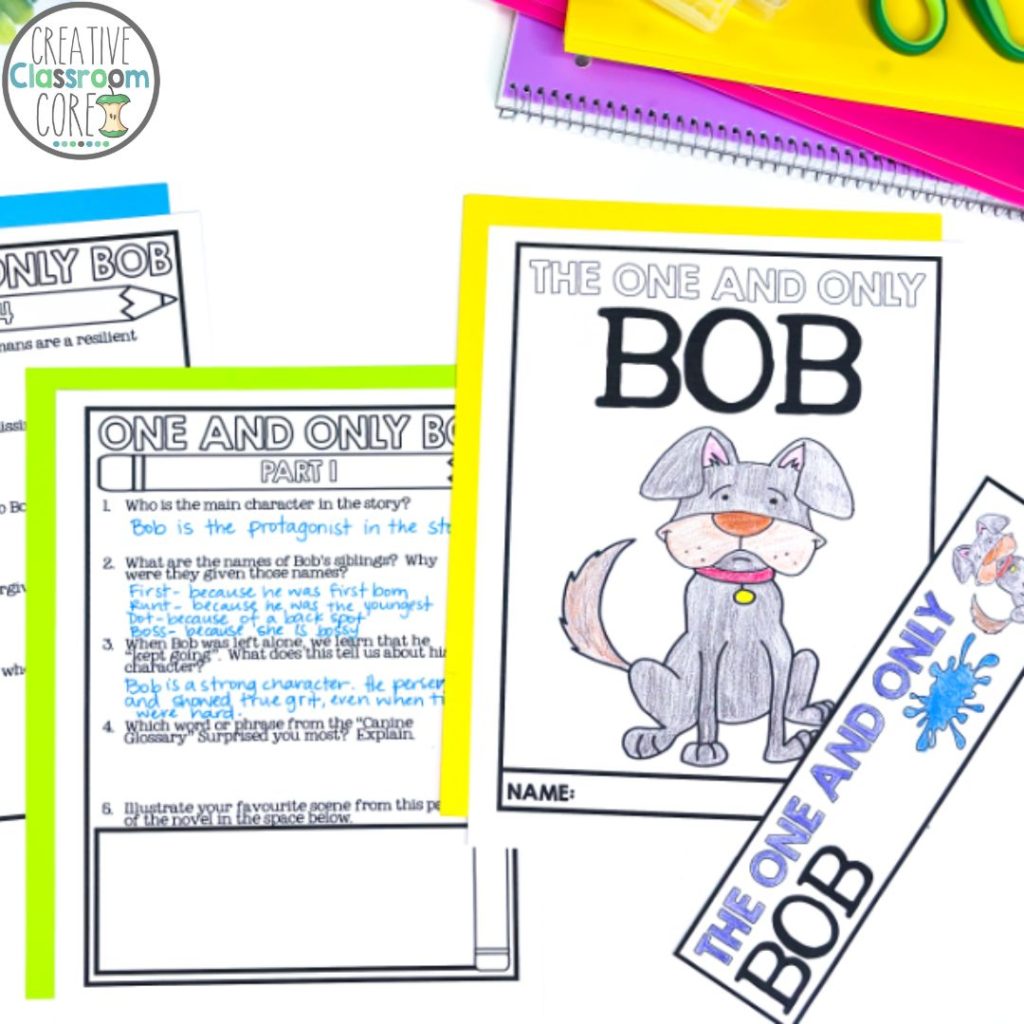
How to Plan a Novel Study: Review Activities
Before the final assessment, consider incorporating a post-reading assignment that serves as a fun review of the text. This can be a great opportunity for student choice and group mini-projects. Some ideas include creating collages, redesigning the cover, creating a timeline of events, writing a book review, or making a character scrapbook. Give them as many or as few guidelines as you feel necessary. However, keep these activities to one or two classes to avoid taking away from prepping for the final assessment.
How to Plan a novel Study: Extension Activities
When planning, remember to be realistic about the time constraints of each class period. Do not set unrealistic expectations, as this can create unnecessary stress and disrupt your plan. Instead, have a bank of optional extension activities that you can pull from if needed. Examples include character diary entries, connection prompts, and comic strips.
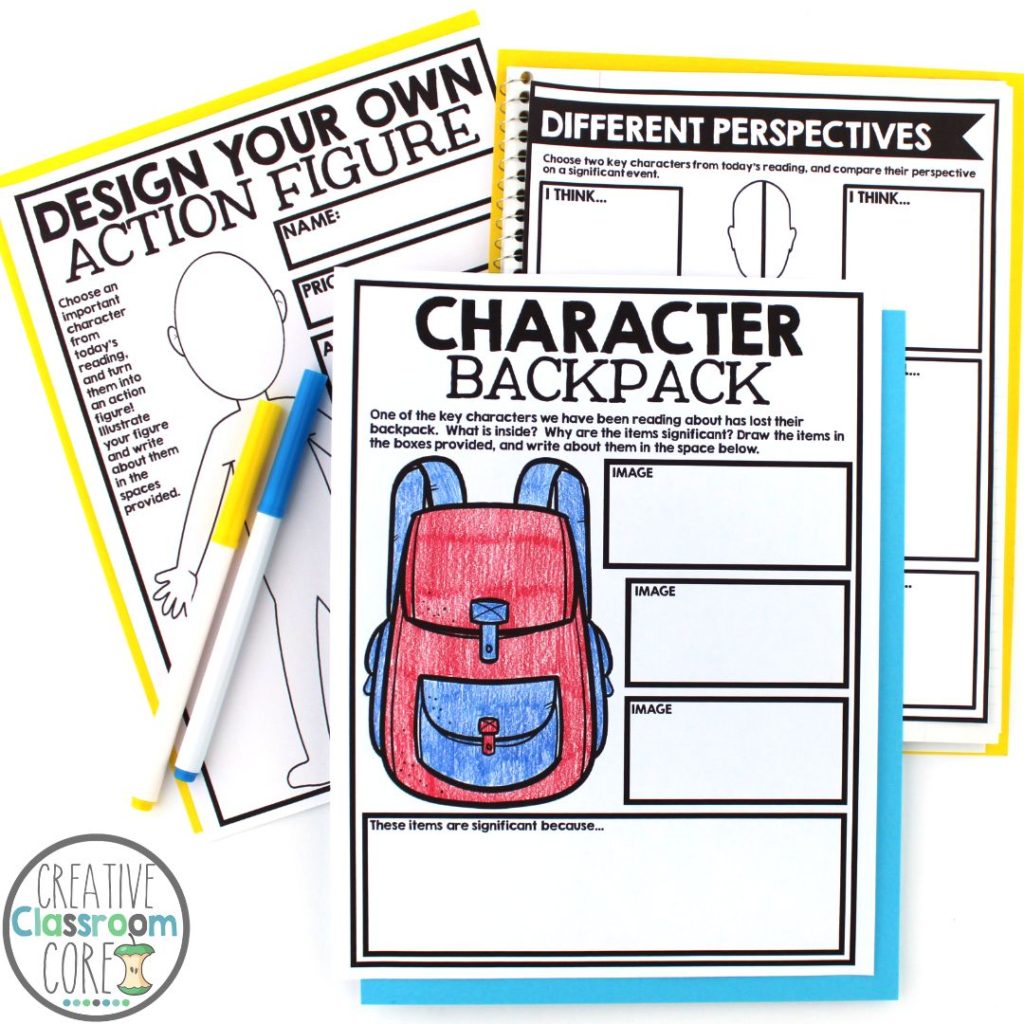
These graphic organizers are some of my very favorites to have on hand for novel study extension activities. They can be used for any novel, and are a great way to get students to think deeply about text in creative ways. Grab a copy for your learners by clicking here or on the image below.
Overall, a novel study is an opportunity for students to engage with a text on a deeper level, building comprehension, and critical thinking skills. By carefully planning out the various activities before, during, and after reading, you can create a well-rounded unit that meets your learning goals and standards while keeping students engaged and challenged.
On the hunt for novel study activities?
Are you working on planning a novel study? Looking for something that has the work already done for you? There are 30 different COMPLETE novel studies created by Creative Classroom Core on TPT! See them all by clicking on the image below!
Want to read more about teaching novel studies?
Check out these posts!
Upper Elementary Novel Study Favorites
Middle School Novel Study Favorites
Graphic Organizers for Any Novel Study
How to Plan a Novel Study: Assessment Selection
Hatchet Novel Study Activities
Interested in signing up for my email list?
If you are interested in signing up for my email list, you can do so by clicking on the link below. I periodically send out emails with free resources, teaching tips, and exclusive deals. Signing up will also give you immediate access to some of my best selling Interactive Notebook resources – foldable activities, graphic organizers, and other fun activities.
